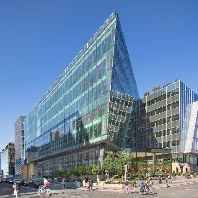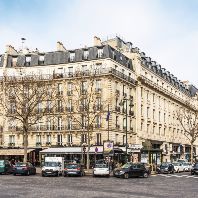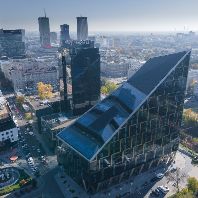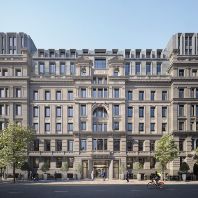London's West End remains the world's most expensive office market with an occupancy cost of 1457.59/m²/per annum (£120.50 / $182.94), according to CB Richard Ellis Group, Inc. (CBRE) Global Research and Consulting's semi-annual Global Office Rents survey.
Hong Kong's Central Business District (CBD) has risen to second place pushing Tokyo's Inner Central to third place. Mumbai is now in fourth position on the list while Moscow remains in fifth in the CBRE rankings, which tracks occupancy costs for prime office space in 176 cities around the globe.
Office occupancy costs measured in U.S. dollars are affected by changes in the dollar's value versus the respective local currency. Hence, office occupancy costs when converted into U.S. dollars are driven by both the local market dynamics of supply and demand, as well as currency changes."Currency fluctuations play a big role in market rankings for the top 10 for office costs, but the 'most expensive club' still includes the usual suspects London, Hong Kong and Tokyo," said Dr. Raymond Torto, CBRE's Global Chief Economist.
The report also found that on a year-over-year basis, global occupancy costs are searching for a bottom, with the markets monitored revealing a collective drop of -4.6% worldwide over the 12-month period ending March 31, 2010. Larger markets experienced a slightly greater decline of -6.4%. "The majority of markets (133) experienced a decline, with 33 of these markets registering double-digit percentage-point drops in office occupancy costs. 53 markets experienced annual increases in occupancy costs, generally smaller markets affected by quality shifts in key market assets. The EMEA region continues to have the most markets on the top 50 list with 29 markets.
"While economic data reflects improvements year-over-year, the commercial real estate market lags the economy, and our occupancy cost survey still shows falling costs," added Dr. Torto. "On a quarter-over-quarter basis, rental data in these markets is generally starting to show a bottoming, and in some locations, such as London, even an uptick."
It is also noteworthy that the Latin American Marketled by Brazilwas the only region to show an increase year over year in occupancy casts. Annual percent change calculations are based upon occupancy costs in local currency and measurement and not influenced by currency changes.
Europe Middle East & Africa
EMEA continues to have the most markets on the top 50 list with 29 markets. London's West End is still the world's most expensive market with an occupancy cost of US$182.94 per sq. ft., despite the recent depreciation of the British pound to the U.S. dollar Other markets in the region that top the list are Moscow (occupancy cost of US$125.10 per sq. ft.), Paris (US$113.23 per sq. ft.), London (City)(US$110.07 per sq. ft.) and Dubai (US$108.92 per sq. ft.).
Overall, the EMEA region had an annual decline of -6.2%, led by Moscow (-26.5%), Dublin
(-24.6%) and Abu Dhabi (-23.7%). This region as a whole experienced 44 out of 57 markets with office occupancy costs falling.
Asia-Pacific
Asia Pacific had 13 markets rank in the top 50 most expensive, with three of the top five most expensive markets. Hong Kong (Central CBD), with an occupancy cost of US$153.20 per sq. ft., was first in the region followed by Tokyo's Inner Central, with an occupancy cost of US$143.99 per sq. ft. Mumbai, with an occupancy cost of US$125.76 per sq. ft., moved up into the top five global markets largely as a result of the recent appreciation of the Rupee to the U.S. dollar.
The most expensive market in the global ranking from the Pacific Region was Perth (US$59.29), which came in at 35th, despite also experiencing the third largest decline in local currency, at -27%.
Asia-Pacific had the largest collective occupancy cost decline with a drop of -9.2%, led by Singapore (-36.2%), Ho Chi Minh City (-30.9%), and Perth (-27.4%). The region had four of the five global markets with the largest decreases and 18 out of 2















